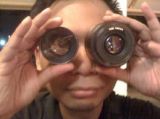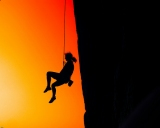- Forum
- General Discussion | Introductions | Off Topic Forum
- Photography General Discussion
- Is there a way around light pollution when shooting stars near city?
Is there a way around light pollution when shooting stars near city?
-
 Topic Author
Topic Author
- Justin
- Snapobsessed
-
- Nikon D7000
- Followers: 101
- Posts: 408
-
Points:
1862
Post #250084
I'm really beginning to think this is a dumb question, but I'm going to hit submit anyway.
Very nice to meet you!
-

- effron
- Newbie
- Followers: 1623
-
Points:
129640
Post #250096
www.knoxvilleobservers.org/dsonline/tips/lprfilters.html
www.astropix.com/HTML/I_ASTROP/FILTERS.HTM
Why so serious?
-

- MajorMagee
- Photography Hooked
-
- E-PL1, E-PL2, E-PM1, E-P5
- Followers: 13
- Posts: 739
-
Points:
0
-

- KCook
- Photo Elder
-
- Canon EOS 50D and Olympus E-P5
- Followers: 1325
- Posts: 5410
-
Points:
32913
Post #250145
dim Kelly
-

- Nod
- Lone Wolf
-
- Sony a100 & Minolta Maxxum 70
- Followers: 3
- Posts: 191
-
Points:
0
-

- effron
- Newbie
- Followers: 1623
-
Points:
129640
Post #250147
Nod wrote: Would using a lens hood help? I would think it would block light from the sides. I live far enough out in the country so I don't have this problem.
No. The problem is the light bouncing around the moisture and particles(pollutants) in the air.
Why so serious?
Post #250159
-

- Wyrick Photography
- Photography Hooked
-
- Canon 5D Mark II
- Followers: 110
- Posts: 537
-
Points:
4609
Post #250346
Canon 5d Mark II • Canon 24-105mm F/4.0 • Canon 135mm F/2.0 • Canon 50mm F/1.8 • Tamron 28-75mm F/2.8 • Canon 580ex ii
-

- KCook
- Photo Elder
-
- Canon EOS 50D and Olympus E-P5
- Followers: 1325
- Posts: 5410
-
Points:
32913
-

- garyrhook
- Oh Wise One
-
- Nikon D850, Nikon D750, Panasonic G7K
- Followers: 912
- Posts: 11103
-
Points:
67681
-

- KCook
- Photo Elder
-
- Canon EOS 50D and Olympus E-P5
- Followers: 1325
- Posts: 5410
-
Points:
32913
-

- Baydream
- Moderator
-
- Canoni/60D/70D/5DmkIII
- Followers: 388
- Posts: 11185
-
Points:
7278
Post #250488
KCook wrote: By the same reasoning arid regions are preferred for observatories. Such as a deserts of Arizona and Chile. The very highest elevations in the Hawaiian Islands are also arid.
Kelly
This summer has been humid so less opportunities have been available.
Not sure where you are located but a local astronomy club may have some site recommendations.
I just checked on your location, Daytona Beach could be tough because of humidity and congestion but you may fine some areas around state parks and wildlife areas there are acceptable. Just do not end being alligator bait.
Shooting over the oceam does raise some addl humidity that could cause distortion,
Shoot, learn and share. It will make you a better photographer.
fineartamerica.com/profiles/john-g-schickler.html?tab=artwork
-

- KCook
- Photo Elder
-
- Canon EOS 50D and Olympus E-P5
- Followers: 1325
- Posts: 5410
-
Points:
32913
-

- MYoung
- Master of the Lens
-
- Sony a7s II, Nikon D750
- Followers: 486
- Posts: 1625
-
Points:
12085
- Forum
- General Discussion | Introductions | Off Topic Forum
- Photography General Discussion
- Is there a way around light pollution when shooting stars near city?
Latest Reviews
The Canon EOS R100 is an entry-level mirrorless camera introduced in 2023. But just because it’s an entry-level camera doesn’t mean it’s a bare-bones camera. Find out why in this review!
Nikon’s retro-looking Nikon Zfc is anything but retro. Under its classic body is a host of features and amenities that make it a worthwhile compact mirrorless camera for 2024.
The Canon EOS R50 is one of the newest R-system cameras from Canon. Is it worth your money? Find out all the details you need to know in this comprehensive review.
The Sony FE 70-200mm f/2.8 GM OSS II is Sony’s flagship mirrorless zoom lens. As such, it’s loaded with features and has a top-shelf build quality that makes it a top pick!
Forum Top Posters
-
1TCav 6 posts
-
2Razky 5 posts
-
3Prago 4 posts
-
4CharleyL 4 posts
-
5Randy Shaw 4 posts
-
6Sandy Smith Photos 3 posts
-
7CaptNemo 3 posts
-
8Hassner 3 posts
-
9db3348 3 posts
-
10Foggy 3 posts
Latest Articles
The Canon EOS R100 is an entry-level mirrorless camera introduced in 2023. But just because it’s an entry-level camera doesn’t mean it’s a bare-bones camera. Find out why in this review!
Are you ready to upgrade your camera? Before buying new, you might consider the value of purchasing used gear to save money.
The Olympus OM-D E-M10 Mark IV is a micro four thirds camera released in 2020. It’s an entry-level system along with the OM-D E-M5 Mark III. Use this guide to determine which one is best for you!
Blue hour photography might not be as well known as golden hour photography, but it is every bit as good a time to create epic images of landscapes. Learn how in this quick tutorial!
Nikon’s retro-looking Nikon Zfc is anything but retro. Under its classic body is a host of features and amenities that make it a worthwhile compact mirrorless camera for 2024.
Moving from taking snapshots of your dog to creating beautiful images doesn’t have to be that difficult! Use the tips outlined in this dog photography guide, and you’ll get better results in no time.
Acrylic print photos are a beautiful way to display your favorite images. But they don’t come without some questions. Get all the answers you need about this medium in this guide!
Where do you get your landscape photography inspiration? Is it from masters like Ansel Adams? Or perhaps viewing art from other genres? We’ve got these and a few other sources for you to check out!














